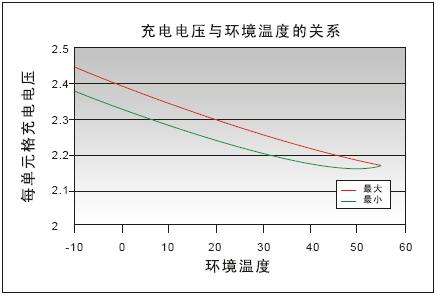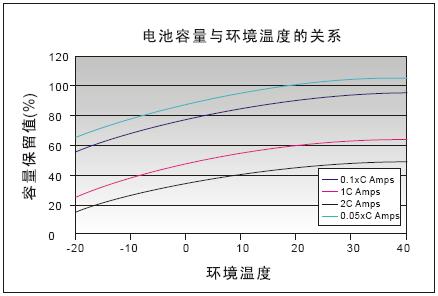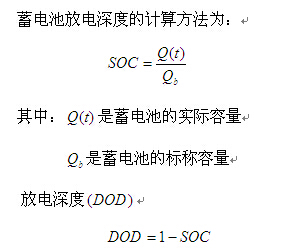1, the composition of the portable power supply system In addition to the solar modules that provide continuous power, the rest of the main components of the power supply system are: solar charge controllers, batteries, inverters, cabinets and structural components. (1) Solar modules: Solar modules are the core part of solar power systems and the highest value in solar power systems. Its role is to convert the sun's radiant energy into electrical energy, or send it to a battery to store it, or push a load to work. The quality and cost of solar modules will directly determine the quality and cost of the entire system. (2) Solar controller: The function of the solar controller is to control the working status of the entire system and play the role of overcharge protection and over-discharge protection of the battery. In areas with large temperature differences, qualified controllers should also have temperature compensation. Other additional functions such as light-controlled switches and time-controlled switches should be optional for the controller. (3) Storage batteries: Generally lead-acid batteries. In small micro-systems, nickel-hydrogen batteries, nickel-cadmium batteries, or lithium batteries may also be used. Its role is to store the electrical energy from the solar modules when there is light, and to release them when needed. (4) Inverter: The current generated by the solar battery is a direct current and is stored in the battery. The inverter converts DC power to 220V AC for use with various loads. In particular, the inverter must be connected to a battery for use under normal circumstances. If the solar battery is directly connected, it will not work due to the instability of the sunshine environment. (5) Cabinets and other structural parts: Mainly the place where the above equipment is placed. According to the different products, the sizes of the cabinets are different. At the same time, according to the differences in product features, there may be different structural components such as DC output, porous plugs, and the like. 2, solar charge controller The solar charge controller is actually the steward of the solar energy and the battery. In the non-inverting system, he can directly access the DC load. Its biggest role is to adjust the charging current according to the battery voltage level, and decide whether to supply power to the load and achieve the following goals: 1. Always keep the battery in full condition. 2. Prevent the battery from overcharging. 3. Prevent excessive battery discharge. 4. Prevents the battery from charging to the solar panel at night. 3, battery It should be said that most domestic and foreign solar cell manufacturers' products are quite mature. The photoelectric conversion efficiency, cost, sales price and service life of these products can generally meet the needs of photovoltaic system design. The correct choice of storage battery as the energy storage device is very important for the design of the solar power supply system. Because the storage battery is used in the solar power supply system, it is very common that the life expectancy is difficult to achieve. 3.1 Commonly Used Battery Introduction In an independent solar solar power supply system, the battery is an important component after the solar battery module, and it is also the part that has the greatest impact on the system performance reliability. During the lifetime of a photovoltaic system, if the cost of replacing the battery is taken into account, there is little difference from the solar module. The development of new energy storage technologies and advanced control technologies is an important way to reduce the cost of solar power systems. At present, there is no battery suitable for all solar power systems, and there are many factors that affect the choice and performance of the battery. Commonly used batteries are: lead-acid batteries, alkaline batteries (nickel cadmium / nickel-metal hydride batteries, lithium batteries), lithium iron phosphate battery lights. The requirements of the solar energy solar energy system for storage batteries are: low price, high charge and discharge efficiency, low self-discharge, long life, good weather resistance, and low maintenance. Considering the high cost-effectiveness and reliability, the lithium iron phosphate battery is too expensive in several battery systems that can be used as the matching object for solar power supply systems, and the high-capacity single-cell technology is not fully matured, and there are some safety issues. Lithium batteries are light and economical, but their weather resistance is poor. Especially in cold regions, the depth of discharge is severely reduced. Nickel-metal hydride batteries and nickel-cadmium batteries are expensive and have a certain memory effect, which is not conducive to capacity recovery. In small capacity applications, such as lawn lamps, nickel-cadmium/nickel-metal hydride batteries and lithium-ion batteries are widely used due to their small size and large capacity; lead-acid batteries are low in price, high in single voltage, and stable in performance, becoming large-capacity solar energy. The preferred battery for the street lighting of the power supply system, especially the colloidal lead-acid battery, is more in line with the needs of an independent solar power supply system for outdoor use. 3.2 Characteristics of colloidal lead-acid batteries Colloidal lead-acid batteries adopt new technologies of colloidal electrolytes, which make up for the defects and deficiencies of ordinary lead-acid batteries in many aspects and play a decisive role in the future lead-acid battery market. In principle, the colloidal lead-acid battery is still a lead-acid battery, but it uses different electrolytes from ordinary sealed lead-acid batteries just to achieve the purpose of sealing the battery and its performance. Colloidal batteries can use pulsed charging, but they need to be adjusted for batteries. After all, colloidal lead-acid batteries are very different from conventional lead-acid batteries. It not only shows that the electrolyte is gel-like, but also manifests itself in The discharge curve is straight and the inflection point is high; the mass ratio, especially the efficiency ratio, is more than 20% larger than that of conventional lead-acid batteries; the service life (generally up to 10-15 years) is also about twice as long as that of conventional lead-acid batteries; And the low temperature properties are much better. Colloidal lead-acid batteries are currently the world's most superior valve-regulated lead-acid batteries. The charging, discharging, and temperature characteristics of the colloidal lead-acid battery are shown in Figures 4-3, 4-4, and 4-5. (1) Charging characteristics: as shown in Figure 4-3. In the solar power supply system, the storage battery is used in a cycle and a floating state, and the charging voltage changes with the ambient temperature. The rated voltage of the rechargeable battery is 2.275V/cell (25°C). When the ambient temperature is lower than 5°C or higher than 35°C, the charging voltage must be adjusted according to the temperature compensation coefficient. The temperature coefficient is -3.3mV/°Ccell. The initial charge current should be 0.3CA or less (C nominal capacity, Aampere). It is recommended to charge at an ambient temperature of 5°C to 35°C to prevent affecting its normal life. Temperature compensation is also suitable for discharging the battery. (2) discharge characteristics: as shown in Figure 4-4. Solar power systems generally have a shallow discharge of 20% or less, and may reach 80% of deep discharge in continuous rainy days. The colloidal lead-acid battery has a cycle life of about 2 times that of ordinary lead-acid batteries in shallow discharge, and can theoretically be operated for 5 to 6 years without replacement. The solar energy supply system of lead-acid batteries generally needs to change the battery in 2 to 3 years. (3) As shown in Figure 4-5, it can be seen that the temperature has a great influence on the capacity of the battery, so the temperature compensation should be considered when charging and discharging. In the solar power supply system, the battery is generally buried underground so that the operating temperature of the battery is close to a constant temperature, and at the same time of anti-freezing and sun protection, the reliability of use of the battery can be effectively ensured. However, the replacement of the battery is rather troublesome, and the large battery pack requires special lifting equipment. Ordinary sealed lead-acid batteries for underground installation can also extend the service life, but in the field of solar energy, the failure rate of the battery is very high, the replacement problem is very prominent; on the contrary, the cycle life of colloidal batteries is three times that of ordinary batteries, and self-discharge is small and can be long-term It is in floating charge state and has good reliability. Therefore, the installation method of burying the battery underground is a common practice in Europe and the United States. The street lights in Germany and the United States are buried using colloidal batteries. 3.3 Battery discharge depth Battery life has a lot to do with depth of discharge. Within a certain range, the greater the depth of discharge, the shorter the battery life. However, when the system is designed, the smaller the better, the smaller the storage capacity that the battery can not discharge, the more it will not only cause the waste of electrical energy, but also increase the system cost. For lead storage batteries, it is generally good to use =60%~70%. 4, inverter Simply put, an inverter is an electronic device that converts low voltage (12 or 24 volts or 48 volts) DC power into 220 volt AC power. Since we usually use 220V AC rectification to DC to use it, and the role of the inverter is the opposite, so get its name. We are in a "mobile" era, mobile office, mobile communications, mobile leisure and entertainment. In the moving state, people not only need the low voltage direct current supplied by batteries or batteries, but also need our 220 volt AC that is indispensable in the daily environment. The inverter can meet this demand. The inverter can convert DC energy (battery, storage battery) into AC (typically 220V, 50Hz sine wave). It consists of an inverter bridge, control logic, and a filter circuit. Widely used in air conditioning, home theater, electric grinding wheel, electric tools, sewing machines, DVD, VCD, computers, televisions, washing machines, range hoods, refrigerators, video recorders, massagers, fans, lighting and so on. In foreign countries, because of the high penetration rate of automobiles, they can use inverters to connect storage batteries to drive electrical appliances and various tools to work outside or travel. The on-board inverter output through the cigarette lighter is 20W, 40W, 80W, 120W to 150W power specifications. Larger power inverters are connected to the battery via the cable. Connecting home appliances to the output of the power converter enables the use of various appliances in the vehicle. The electrical appliances that can be used are: mobile phones, laptops, digital video cameras, cameras, lights, electric razors, CD players, game consoles, handheld computers, power tools, car refrigerators, and various travel, camping, medical emergency appliances Wait. At present, in the field of solar energy, inverters have also been fully applied. Inverters are mainly categorized into sine waves and are mainly divided into two categories. One is a sine wave inverter and the other is a square wave inverter. The sine wave inverter outputs sine wave AC power that is as good as the grid we use everyday, because it does not have electromagnetic pollution in the grid. The output of the square wave inverter is a square wave alternating current with poor quality, and its positive maximum to negative maximum value is generated almost at the same time, thus causing severe instability to the load and the inverter itself. At the same time, its load capacity is poor, only 40-60% of the rated load, and it cannot carry inductive loads. If the load is too large, the third harmonic component contained in the square-wave current will increase the capacitive current flowing into the load. In severe cases, the load filter capacitor will be damaged. In view of the above disadvantages, a quasi-sine wave (or modified sine wave, modified sine wave, analog sine wave, etc.) inverter appears. The output waveform has a time interval from the maximum value in the positive direction to the negative value in the negative direction. The use effect has been improved, but the quasi-sinusoidal waveform is still composed of polylines. It belongs to the square wave category and has poor continuity. In summary, sine wave inverters provide high quality AC power that can drive any kind of load, but are technically demanding and costly. Quasi-sine-wave inverters can meet most of our electricity demand, with high efficiency, low noise, and a reasonable price, thus becoming the mainstream products in the market. The manufacture of the square wave inverter employs a simple multivibrator. Its technology belongs to the level of the 50s and will gradually exit the market. Inverters can be divided into coal-fired inverters, solar inverters, wind energy inverters, and nuclear power inverters, depending on the power generation system. According to different uses, it is divided into independent control inverters and grid-connected inverters. Solar inverters in the world have high efficiency in Europe and the United States. The European standard is 97.2%, but the price is relatively expensive. The efficiency of other domestic inverters is below 90%, but the price is much lower than imports. In addition to power and waveform, choosing the efficiency of the inverter is also very important. The higher the efficiency, the less power is wasted on the inverter and the more energy is used in the electrical appliances, especially when you use a low-power system. The importance of one point is even more pronounced. When the inverter is working, it also consumes a part of its own power. Therefore, its input power is greater than its output power. The efficiency of the inverter is the ratio of the inverter output power to the input power, ie, the inverter efficiency is the output power ratio of the input power. If an inverter inputs 100 watts of direct current and outputs 90 watts of alternating current, then its efficiency is 90%. 5, box In general portable solar power systems, the cabinet should accommodate all devices including solar modules, and it is better to integrate them all. All operations and connectors are done on the panel. Should also have a certain degree of waterproof and dustproof capabilities. Tactical Pocket Knife,Tactical Knife,Tactical Folding Knife,Tactical Hunting Knife YangJiang Junxiong Trading & Industry Company Co.,Ltd , https://www.cn-sundo.com

Figure 4-3 Relationship between charging voltage and ambient temperature 
Figure 4-4 Comparison of battery cycle life and depth of discharge 
Figure 4-5 Relationship between battery capacity and ambient temperature 

The composition of outdoor portable solar power system
